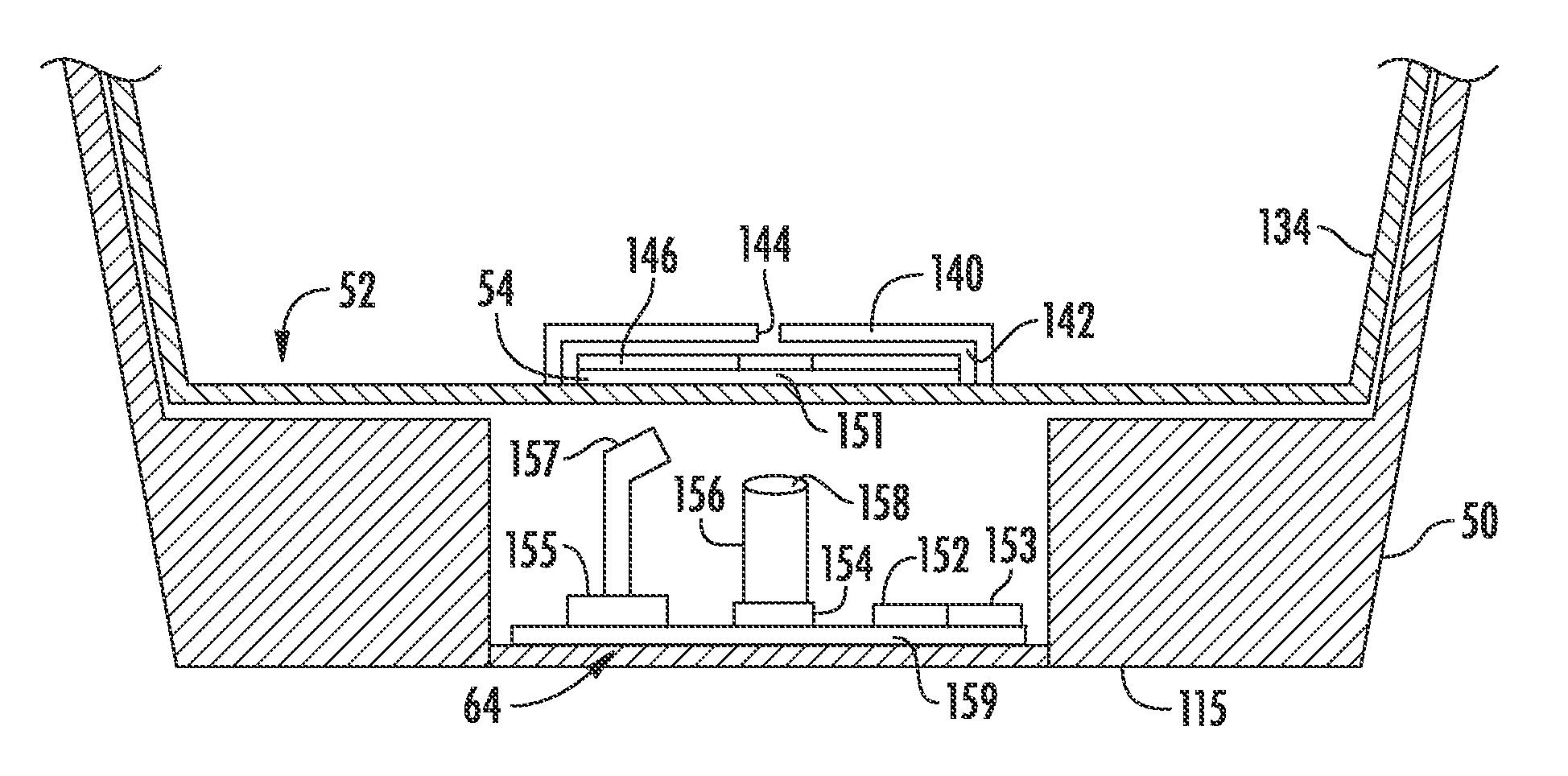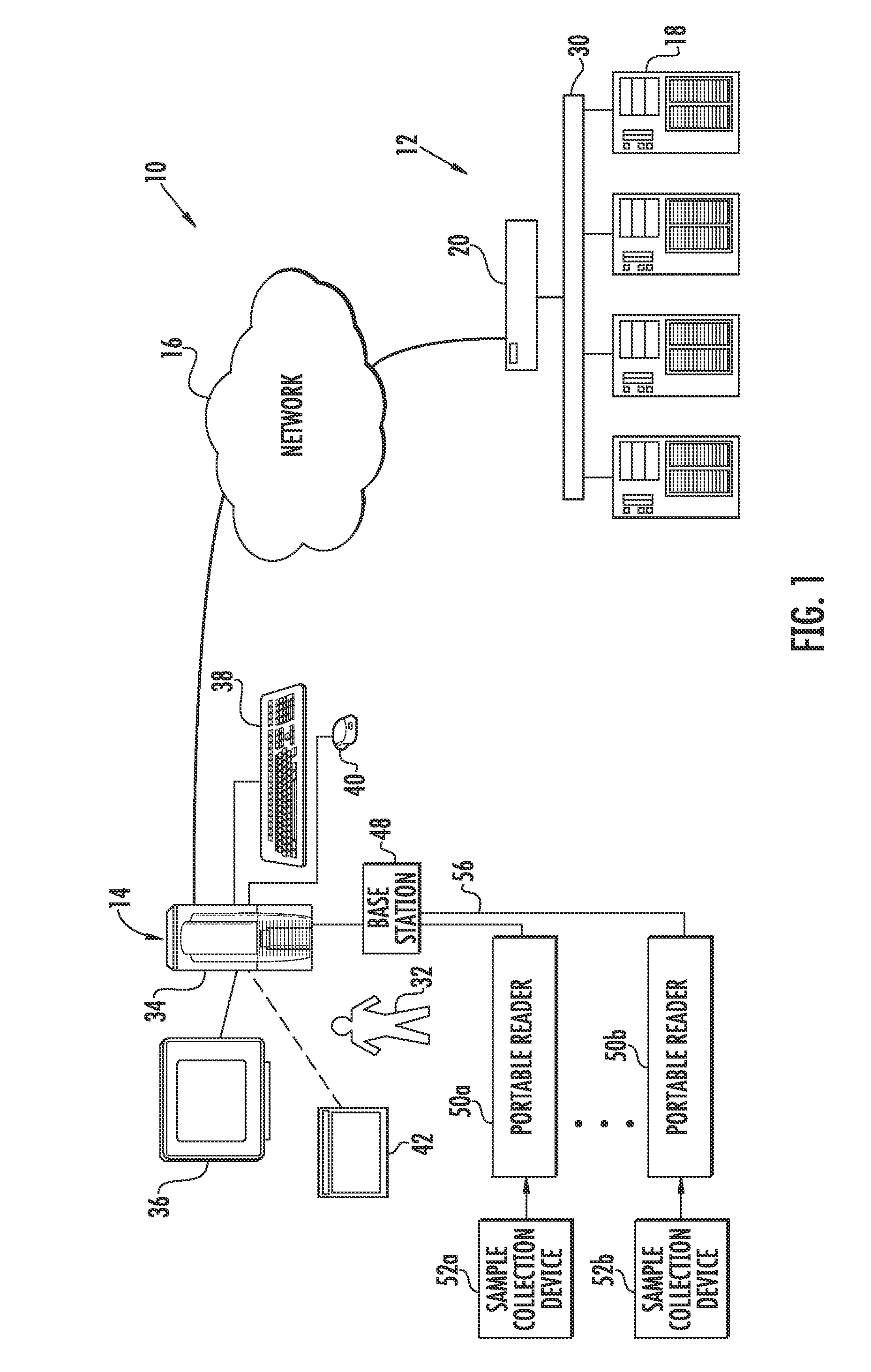Sample analysis system and method of use
a sample analysis and sample technology, applied in the field of patient sample collection and analysis system, can solve the problems of increasing the cost associated with the development and manufacture of the analysis instrument family, increasing the cost of conventional analysis instrument use, and requiring a significant amount of manual labor to operate, so as to achieve accurate and repeatable assays, uniform distribution of fluid samples, and air venting
- Summary
- Abstract
- Description
- Claims
- Application Information
AI Technical Summary
Benefits of technology
Problems solved by technology
Method used
Image
Examples
Embodiment Construction
[0076]The description herein of several embodiments describes non-limiting examples that further illustrate the presently claimed and disclosed inventive concept(s).
[0077]In the following detailed description, numerous specific details are set forth in order to provide a more thorough understanding of the disclosure. However, it will be apparent to a person having ordinary skill in the art that the presently claimed and disclosed inventive concept(s) may be practiced without these specific details. In other instances, features which are well known to persons of ordinary skill in the art have not been described in detail to avoid complication unnecessarily the description.
[0078]Therefore, unless defined otherwise, all technical and scientific terms used herein have the same meanings as commonly understood by one skilled in the art to which the presently claimed and disclosed inventive concept(s) pertains. For example, the term “plurality” refers to “two or more.” The singular forms “...
PUM
| Property | Measurement | Unit |
|---|---|---|
| diameter | aaaaa | aaaaa |
| diameter | aaaaa | aaaaa |
| volumes | aaaaa | aaaaa |
Abstract
Description
Claims
Application Information
 Login to View More
Login to View More - R&D
- Intellectual Property
- Life Sciences
- Materials
- Tech Scout
- Unparalleled Data Quality
- Higher Quality Content
- 60% Fewer Hallucinations
Browse by: Latest US Patents, China's latest patents, Technical Efficacy Thesaurus, Application Domain, Technology Topic, Popular Technical Reports.
© 2025 PatSnap. All rights reserved.Legal|Privacy policy|Modern Slavery Act Transparency Statement|Sitemap|About US| Contact US: help@patsnap.com



